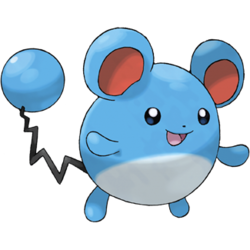ビークエン
Pokemon name meaning:
ビー bii – bee (Japanese word from English)
クイーン kuiin – queen (Japanese word from English)
Notes:
An unusual case of a Pokemon name based entirely on English words. Both are used in Japanese, though the katakana and rõmaji of クエン quen clearly refer to the English spelling rather than the Japanese and English pronunciation of クイーン/queen.
Interestingly the English term “queen bee” has not been katakana-ized as an adopted Japanese word. The Japanese term for a queen bee is 女王蜂 jooubachi.
The English name for Beequen – Vespiquen – refers to vespa (Latin for wasp), while following the Japanese name’s use of “quen” for queen. The wasp reference is rather curious, as Vespiquen is still, as in Japanese, classified as a “beehive pokemon” (はちのすポケモン).










